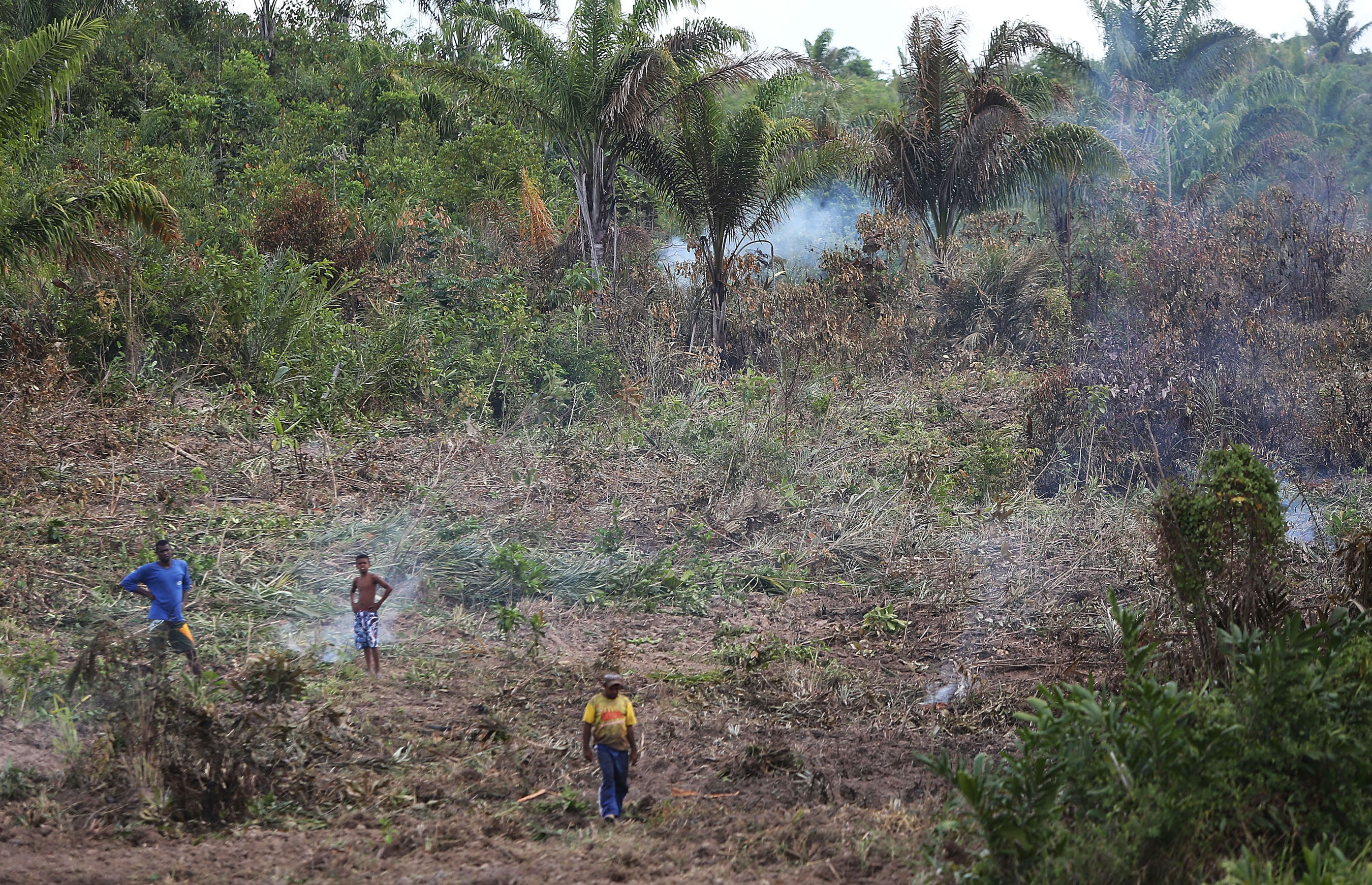Brazil’s presidential election could mean billions of tons of additional greenhouse gases

Environmentalists and scientists fear that Brazil’s newly elected president, the far-right politician Jair Bolsonaro, will accelerate the destruction of the nation’s Amazon rainforest and Cerrado savanna, which rank among the world’s largest storehouses of carbon.
Both absorb massive amounts of greenhouse gas from the air, stocking it away in trees, grasses, roots, and soil. Bolsonaro’s campaign rhetoric and ties to agribusiness have led observers to fear he’ll push to loosen environmental rules and monitoring, says Tica Minami, coordinator of Greenpeace Brazil’s Amazon campaign. That could embolden farmers to burn down or otherwise clear more land for soybeans, sugarcane, and cattle, releasing vast quantities of carbon dioxide back into the atmosphere.
Already, as much as 15% of global climate emissions come from “deforestation and degradation of tropical forests,” studies have found.
The Amazon
Deforestation rates in the Amazon have declined significantly since early in the last decade, in part thanks to the “Save the Rainforest” movement and stronger land-use regulations. But figures seem to be creeping back up, and the election of Bolsonaro could send them soaring.
The Amazon is the world’s largest rainforest, spanning nine nations and accounting for around 17% of global carbon trapped in vegetation on land.
A 2011 study led by NASA scientists found that carbon biomass in the Amazon generally ranged from 125 to more than 200 metric tons per hectare. If deforestation rates in the Brazilian Amazon were to return to the 2004 peak, a likely scenario under Bolsonaro’s rule, it could boost annual emissions to almost 3 billion metric tons over his term, at the top end of that range. That’s nearly half the United States’ total annual greenhouse-gas emissions, which stood at 6.5 billion metric tons in 2016.
A study by scientists at Brazil’s National Institute for Space Research found that additional emissions could be even higher. They estimated that Amazon deforestation rates could triple, reaching 25,600 square kilometers a year, if Brazil exited the Paris climate deal, authorized mining on indigenous lands, and enacted other policies Bolsonaro has floated.
That would add up to an additional 1.3 billion metric tons of carbon dioxide and equivalent greenhouse gases annually, or more than 13 billion from 2021 to 2030, the researchers found, according to the Estadão newspaper in São Paulo.
The Cerrado
Brazil’s Cerrado is a sprawling tropical savanna covering nearly 800,000 square miles (2 million square kilometers) to the southeast of the Amazon. From 2000 to 2015, nearly 240,000 square kilometers were converted to farmland and other purposes, pumping out some 32 billion metric tons of carbon dioxide, according to one study.
Scientific estimates of carbon in the Cerrado’s vegetation range from 22 to 78 tons per hectare, while carbon in the soil spans from 97 to 210 tons, according to the Union of Concerned Scientists.
The good news is this buried carbon isn’t released as readily when the land is burned or cleared. But tilling soil and growing crops like soybeans accelerates its leakage into the atmosphere.
From 1990 to 2010, the annual rate of loss in the Cerrado was 0.61%, according to one study. But more recent research found the rate was 1.2% in Minas Gerais, a state in the southeast. Applying that doubled rate to the ecosystem as a whole would add up to 750 million metric tons of addition annual emissions over Bolsonaro’s term.
An additional 2 billion metric tons in the soil could be released over longer time periods.
In other words, one election in one nation could add 4 to 6 billion metric tons of carbon dioxide to the atmosphere. That’s nearly a fifth of the entire globe’s annual output of greenhouse gases.
Update: The latter two charts were changed to clarify the time frame of potential emissions.
Deep Dive
Climate change and energy
The problem with plug-in hybrids? Their drivers.
Plug-in hybrids are often sold as a transition to EVs, but new data from Europe shows we’re still underestimating the emissions they produce.
Harvard has halted its long-planned atmospheric geoengineering experiment
The decision follows years of controversy and the departure of one of the program’s key researchers.
Decarbonizing production of energy is a quick win
Clean technologies, including carbon management platforms, enable the global energy industry to play a crucial role in the transition to net zero.
The hard lessons of Harvard’s failed geoengineering experiment
Some observers argue the end of SCoPEx should mark the end of such proposals. Others say any future experiments should proceed in markedly different ways.
Stay connected
Get the latest updates from
MIT Technology Review
Discover special offers, top stories, upcoming events, and more.